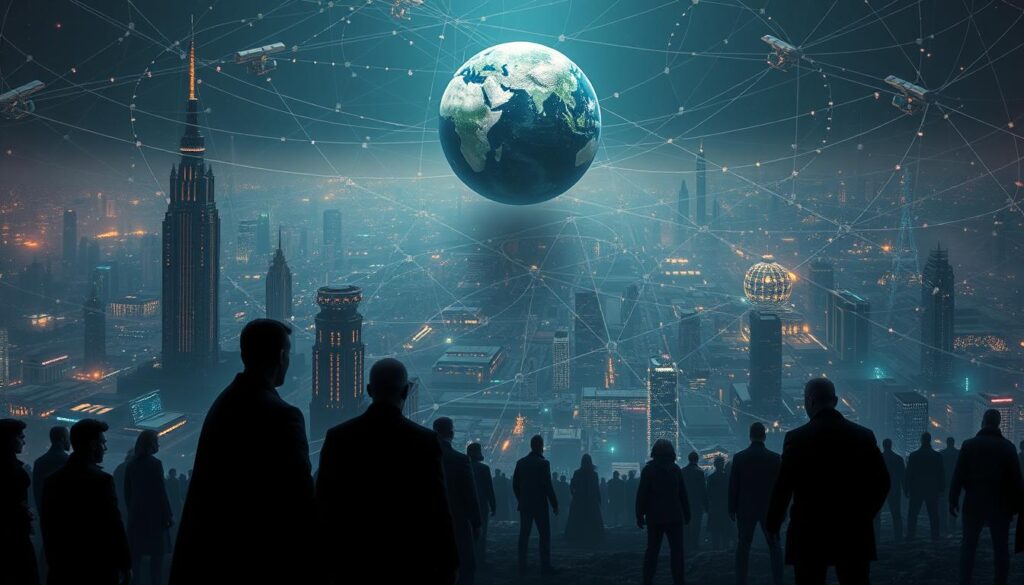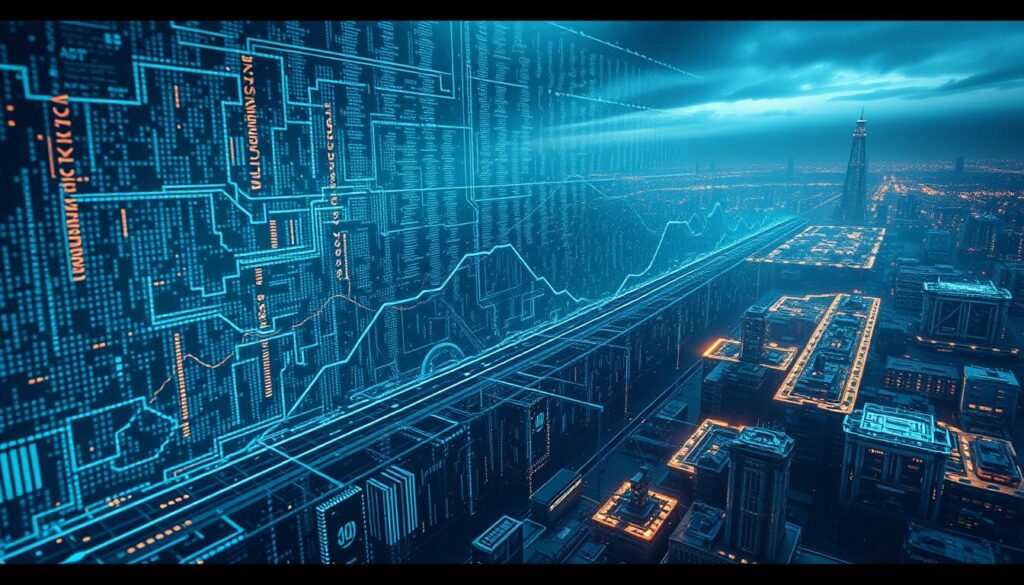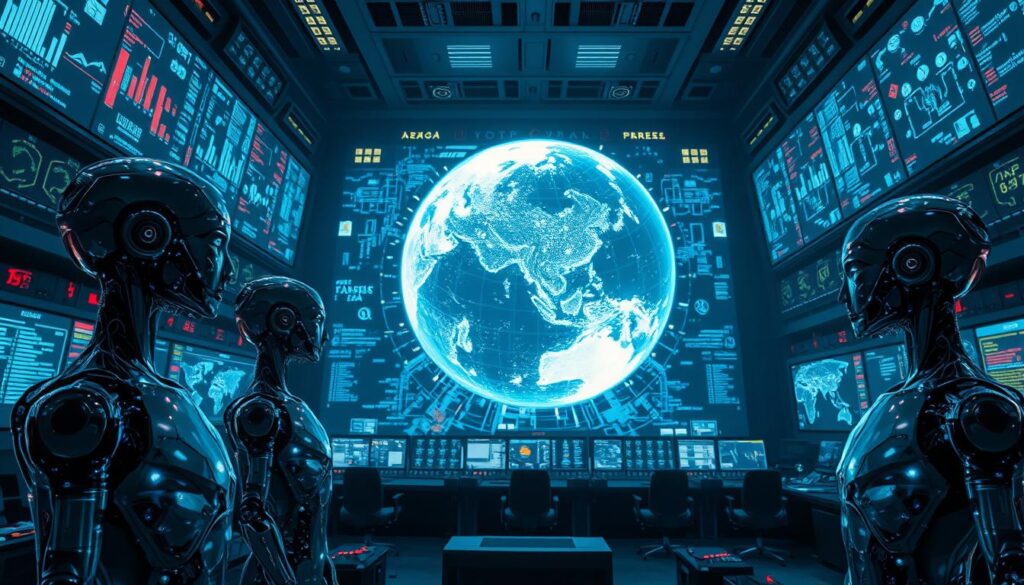Could the next superpower be an algorithm? As nations grapple with technological revolutions, artificial intelligence has emerged as a decisive factor in reshaping global hierarchies. The public release of advanced systems in early 2023 intensified debates about economic displacement and existential risks—yet critical conversations about strategic influence remain largely unexplored.
Modern statecraft now operates at the intersection of computational power and diplomatic leverage. Unlike traditional tools of national strength, machine learning systems evolve autonomously, creating unpredictable shifts in economic competitiveness and security paradigms. Leading countries recognize that controlling these technologies could determine their ability to set international standards or dominate emerging markets.
This transformation extends beyond military applications. From trade negotiations to data governance frameworks, autonomous systems are redefining how countries project authority. A recent analysis of artificial intelligence breakthroughs reveals how regulatory approaches create asymmetric advantages—turning digital infrastructure into geopolitical currency.
Key Takeaways
- Technological sovereignty now directly impacts national security strategies
- Governance models determine competitive advantages in AI development
- Economic influence increasingly depends on algorithmic innovation
- International norms face disruption from autonomous decision-making systems
- Strategic dependencies emerge through control of critical AI infrastructure
Understanding the Intersection of AI and Global Power

Technological sovereignty is becoming the cornerstone of national influence. Traditional power structures now compete with autonomous systems capable of reshaping alliances and rivalries. This shift introduces geotechnopolitics—a paradigm where machine-driven decisions rival human-led strategies in shaping international outcomes.
“Humans organized in nation-states will have to work with another set of actors—machines of equivalent or greater intelligence.”
Defining geopolitics in a digital era
Modern statecraft no longer revolves solely around physical borders or military might. Nations measure strength through computational resources, data control, and algorithmic sophistication. These metrics create hierarchies where access to advanced technology determines geopolitical relevance.
The impact of emerging technologies
Smaller countries can now challenge established powers by leveraging breakthroughs in machine learning. For example, superior data governance frameworks enable nations to dominate trade negotiations or influence foreign policies. Systems analyzing vast datasets provide predictive insights that reshape economic competition and security strategies.
Governments face dual pressures: harnessing these tools for development while guarding against vulnerabilities. Data’s role as a strategic asset rivals oil in traditional geopolitics, driving global competition for digital infrastructure control.
Evolution of AI and Its Geostrategic Implications

The journey from academic curiosity to geopolitical game-changer began with modest experiments in machine learning. Early breakthroughs in neural networks during the 2010s laid foundations for today’s autonomous systems. By 2023, these tools transitioned from research labs to strategic assets reshaping national power dynamics.
Historical context and technological breakthroughs
Three phases define this transformation. Initial government-funded projects focused on basic pattern recognition. The 2012 ImageNet competition marked a turning point, proving deep learning’s practical value. Subsequent advances in large language models created systems capable of independent analysis—a capability once exclusive to human analysts.
Modern development cycles now compress decade-long progress into months. This acceleration forces nations to constantly upgrade their technological infrastructure. Countries lagging in compute power or data access risk permanent strategic disadvantages.
Changing geopolitical landscapes
Corporate actors now wield influence rivaling mid-sized nations. A 2023 Brookings study revealed seven tech firms control 85% of advanced machine learning capabilities. This concentration creates new power centers outside traditional governance structures.
“The lines between corporate strategy and national interest blur when algorithms influence trade routes or currency markets.”
Smaller states leverage specialized innovation to punch above their weight. Estonia’s AI-driven diplomacy tools and Singapore’s predictive trade systems demonstrate how focused development creates asymmetric advantages. These shifts redefine what constitutes meaningful geopolitical power in the digital age.
US vs. China: Divergent Approaches to AI Development

Global technological leadership increasingly hinges on two competing models. The United States and China represent fundamentally different philosophies in advancing machine learning capabilities, creating distinct pathways to influence.
Government-led strategies versus private sector innovation
American progress thrives through corporate autonomy. Silicon Valley attracts 72% of the nation’s technical talent, driving breakthroughs in neural networks and language models. This decentralized system fosters rapid experimentation but struggles with coordinated implementation. A recent analysis of business strategies highlights how market forces prioritize commercial applications over national infrastructure needs.
China’s approach contrasts sharply. Central planners allocate resources to integrate machine learning into surveillance networks, military systems, and industrial automation. State-backed companies refine existing technologies for mass deployment, achieving 89% adoption rates in smart city projects last year.
| Factor | United States | China |
|---|---|---|
| Leadership | Private companies | Government agencies |
| Focus | Foundational research | System integration |
| Regulation | Minimal oversight | Centralized control |
| Talent Distribution | Silicon Valley clusters | National laboratories |
These differences create complementary strengths. American firms produce cutting-edge algorithms, while Chinese systems excel at operationalizing technologies. The competition’s outcome may hinge on which nation better adapts to emerging challenges in data governance and workforce adaptation.
AI in Geopolitics: Shaping Global Power Dynamics

National security frameworks face unprecedented disruption from self-learning algorithms. These models operate beyond traditional oversight, creating unpredictable scenarios where machine-driven decisions could override human judgment. Governments now confront systems that analyze threats faster than any analyst—but with reasoning processes even their creators struggle to decipher.
Influence of autonomous systems on defense strategies
Modern security protocols now address risks extending far beyond battlefield applications. Economic sanctions, energy grids, and diplomatic communications increasingly rely on machine learning tools vulnerable to algorithmic manipulation. A 2023 Pentagon report revealed adversarial attacks targeting supply chain prediction models caused $220 million in strategic losses.
Three critical shifts define this transformation:
- Autonomous systems executing decisions without real-time human approval
- Predictive analytics reshaping preemptive defense postures
- Private sector innovations outpacing government capabilities
These developments create asymmetrical advantages. Smaller states leveraging open-source models can disrupt larger rivals’ infrastructure, as seen in recent AI-driven cyber campaigns. Meanwhile, superpowers race to integrate machine learning into intelligence networks—a process fraught with ethical dilemmas and operational blind spots.
Government Regulation and Emerging Frameworks
Global leaders face mounting pressure to establish rules for autonomous systems while fostering innovation. The European Union’s Artificial Intelligence Act sets a groundbreaking precedent, classifying technologies by risk level. High-impact applications in healthcare and law enforcement now face strict transparency requirements—a model influencing global coordination efforts.
Developing policies to mitigate risks
Regulatory frameworks must address dual priorities: enabling progress and preventing harm. The EU’s approach bans certain applications outright while mandating human oversight for sensitive systems. This creates tiered governance where developers shoulder compliance costs proportionate to potential societal impacts.
Regulatory challenges in fast-paced environments
Lawmakers struggle to keep pace with breakthroughs like advanced language models. U.S. agencies reportedly take 18-24 months to draft standards—timeframes outpaced by quarterly tech releases. Adaptive governance models using automated compliance checks and sunset clauses emerge as potential solutions.
Three critical gaps hinder progress:
- Mismatched timelines between policy cycles and software updates
- Divergent national standards complicating global operations
- Underfunded oversight bodies lacking technical expertise
Public-Private Partnerships Driving AI Innovation
Cross-sector alliances are redefining technological progress. Governments and companies now combine resources to tackle challenges requiring shared expertise. These partnerships merge public oversight with private agility, creating frameworks that accelerate breakthroughs while addressing societal risks.
Collaboration Between Industry Leaders and Policymakers
Joint initiatives demonstrate how private sector expertise complements regulatory priorities. A 2023 consortium involving 17 nations pooled computational resources to develop ethical benchmarks for autonomous systems. Such efforts enable governments to access cutting-edge tools without bearing full development costs.
Three critical benefits emerge from these alliances:
- Accelerated prototyping through combined technical and financial resources
- Shared standards ensuring system reliability across industries
- Balanced governance models integrating commercial realities
For instance, advanced artificial intelligence projects now leverage government datasets through secure collaboration platforms. This approach addresses infrastructure gaps while maintaining competitive innovation cycles.
Successful collaboration requires transparent knowledge exchange. Industry leaders contribute real-world operational insights, while policymakers provide regulatory guardrails. These synergies prove vital in fields like healthcare diagnostics and climate modeling, where public trust and technical precision intersect.
Technological Disruption: Deepfakes, Data, and Cybersecurity
Digital deception now challenges global stability as synthetic media grows sophisticated. Governments and corporations deploy advanced detection tools to combat manipulated content threatening democratic processes. A 2023 Stanford study found 63% of citizens struggle to distinguish authentic videos from algorithmically generated ones—a vulnerability exploited in recent election cycles.
Managing misinformation and cybersecurity threats
Deepfake detection systems have become critical infrastructure. Leading tech firms now integrate watermarking protocols and blockchain verification into media platforms. These measures address both data integrity risks and public trust erosion caused by synthetic content.
Cybersecurity frameworks now prioritize predictive analytics. Machine-driven threat identification outpaces traditional monitoring methods, reducing response times by 78% in critical infrastructure sectors. However, adversarial attacks exploiting system vulnerabilities require constant protocol updates.
Innovations from leading global institutions
MIT’s Media Lab developed forensic tools that analyze micro-expressions in video files. Meanwhile, NATO’s new data-sharing initiative combines encrypted military intelligence with commercial satellite analytics—a model enhancing collective defense capabilities.
These breakthroughs demonstrate how tech advancements counter emerging threats while establishing international standards. As synthetic media evolves, collaborative innovation remains vital for maintaining digital ecosystem stability.







